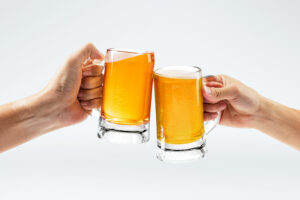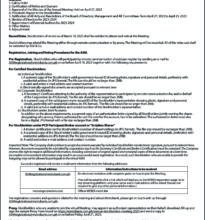No beer in heaven

“In heaven there is no beer” was one of our favorite ditties during our rough and unrestrained days in high school. The lyrics go:
In heaven there is no beer/That’s why we drink it here/And when we’re all gone from here/Our friends will be drinking all the beer
In heaven there is no wine/So we drink till we feel fine/And when we leave this all behind/Our friends will be drinking all the wine
A half century has passed, and we have matured and have become wiser. Being senior citizens, we have become health-aware. Binge drinking is no longer the norm; moderate drinking is the practice.
Despite the caution in our later years, we simply have reaffirmed our love for beer, wine, and spirits. And we continue to sing “In heaven there is no beer.”
We can likewise intellectualize the worldly significance of liquor. In this regard, I came across a New York Times (NYT) opinion piece titled “How Beer Gave Us Civilization,” written by Jeffrey P. Kahn, a clinical associate professor of psychiatry. The piece, published 10 years ago (March 15, 2013), is a paean to beer.
I wonder whether the author would have written a sober or less celebratory piece if he had known then the evidence that liquor of any type has no safe level of drinking. But I’m getting ahead of my story.
The NYT opinion piece is an advertisement for beer in the disguise of an academic discourse. It nevertheless amuses. Kahn’s ode to beer is anchored on his belief that the drink was the antidote to social constraints. While acknowledging that social constraints “gave structure and strength to our primeval herds,” and hence made “our ancient forebears cooperate, prosper, multiply,” the author recklessly concludes that “these same lifesaving social instincts didn’t readily lend themselves to exploration, artistic expression, romance, inventiveness, and experimentation — the other human drives that make for a vibrant civilization.”
Further: “To free up those, we needed something that would suppress the rigid social codes that kept our clans safe and alive. We needed something that, on occasion, would let us break free from our biological herd imperative….”
And here, Kahn gets more reckless: “We needed beer.”
Whoa! That’s how the psychiatrist, and an academic at that, strays from the scientific method. Worse, says he, this is “how beer gave us civilization.”
Kahn’s thinking is an example of reductionism, of bad logic. A smart-aleck could have engaged Kahn in a mischievous, comical debate. Couldn’t it have been another psychoactive substance like mushrooms, poppy, or cannabis, other than beer, that lent our forebears to “exploration, artistic expression, romance, inventiveness and experimentation?”
Emily Bell, who writes about food and beverages and their connection to culture and politics, will disagree. She has an essay humorously titled: “Early Man Smoked Weed Before Discovering Alcohol. No Wonder It’s Called The Stone Age.” (vinepair.com; updated on Aug. 8, 2016). Bell wrote about a systematic review authored by Tengwen Long et al. titled “Cannabis in Eurasia: origin of human use and Bronze Age trans-continental connections” (published in Vegetarian History and Archaeology on June 27, 2016).
Kahn’s argument crumbles in the face of proof that humankind was already engaged in exploration, artistic expression, romance, inventiveness, and experimentation, before the advent of beer. Prehistoric man, for example, had manifested artistic expression through cave engravings and paintings.
On beer and romance: The story of Adam and Eve is an example of romance to a tee. It was not just about love; it was about sex and nudity, temptation and betrayal, and banishment. But beer was not present when the story of Adam and Eve happened.
Beer itself was the product of such exploration, inventiveness, and experimentation. So, we have to correct Kahn: It is not beer that gave us civilization; it was civilization that gave us beer.
So let’s move away from faulty reasoning, including causal fallacy, as exhibited by Kahn’s NYT opinion. Let’s conform to the scientific method when talking about alcohol.
The latest scientific evidence refutes the hitherto dominant belief that moderate drinking can be good for one’s health. The claim that moderate drinking is good for the health is illustrated by a graph known as the J curve. The graph’s horizontal axis measures drinks per day and the vertical axis measures the relative risk of mortality from all causes.
The lowest point of the J curve, which is somewhere in the middle, represents the moderate drinkers. The J curve shows that the moderate drinkers have the lowest risk of mortality. Said differently, the moderate drinkers (defined as limiting intake to two drinks or less per day for men and one drink or less per day for women) have lower risks of all-cause mortality than those who abstain from drinking (represented by the J’s hook).
The heavier drinkers face much higher risks of mortality. They are represented by the high point in the J curve.
Two studies stand out for disproving the long-held J curve observations.
The first study, authored by Robyn Burton and Nick Sharon, is titled “No level of alcohol consumption improves health,” published in The Lancet, Aug. 23, 2018. Here is a lengthy quote from said journal article:
“The study considers the extent to which moderate levels of consumption are protective for some health conditions. A paucity of estimates from meta analyses identifying appropriate reference categories, adequately accounting for survival bias and other confounders, has meant previous assessments of the harm of alcohol have been potentially inaccurate. However, the emerging literature can account for some of these issues, enabling more reliable estimates of the disease burden attributable to alcohol. By implementing a novel method to establish a counterfactual level of exposure across varied relative risks that does not need to assume zero exposure, the authors present tangible evidence for low-risk drinking recommendations. The level of consumption that minimizes an individual’s risk is 0 g of ethanol per week, largely driven by the fact that the estimated protective effects for ischaemic heart disease and diabetes in women are offset by monotonic associations with cancer.”
The second study is authored by Jinhui Zhao, Tim Stockwell, Tim Naimi, et al. and titled “Association Between Daily Alcohol Intake and Risk of All-Cause Mortality” (published by JAMA Network on March 31, 2023). This study is summarized as follows: The systematic review and meta-analysis consisting of 107 cohort studies and involving more than 4.8 million participants showed that “daily low or moderate alcohol intake was not significantly associated with all-cause mortality risk, while increased rate was evident at higher consumption levels, starting at lower levels for women than men.”
The main problem with the J-curve observations was it could not prove causation. Confounding factors were ignored. For example, the moderate drinkers in the observational studies also had attributes indicating healthy lifestyle and habits which lower their total mortality risks and make them live longer.
Hence, the presence of another variable influences the relationship between moderate drinking and relative risk of all-cause mortality. This phenomenon is called interaction effects. Analysts have to be careful in explaining variables that have interaction effects.
Further, the abstainers chosen for the J-curve observations included those who were former heavy drinkers or those who had chronic health problems. This sample selection of abstainers resulted in a biased outcome.
Now that the evidence points to no safe level of drinking, public policy toward alcohol has to unequivocally discourage consumption.
Society has a consensus that the harm caused by alcohol drinking is not just to individual health, and that it extends to the public sphere. Providing care and treatment to those afflicted with alcohol-related diseases is a cost to public health. The productivity losses arising from alcohol-related diseases likewise affect the whole economy.
Drunkenness results in accidents or collisions that harm others. And excessive drinking foments violence, especially against women and children.
The examples above constitute what economists call the negative externalities of alcohol drinking. A tax on negative externalities is thus appropriate to discourage consumption and to compensate for the harm to others that such individual consumption causes.
In the Philippines, alcohol taxes are moderate, and one reason behind that is the view that light drinking is acceptable. This has to change, now that the evidence refutes moderate drinking and establishes that no safe level of alcohol drinking exists.
This does not translate into prohibition. Taxation remains the most effective policy to deter consumption of harmful goods. But it is high time we had much heavier alcohol taxation.
Probably, my generation will continue to drink alcohol despite taxing it heavily. Anyhow, we are that generation that will soon be knocking on heaven’s door. And in heaven there is no beer.
But let there be no doubt that any ounce of alcohol is unsafe for everyone.
Filomeno S. Sta. Ana III coordinates the Action for Economic Reforms.




